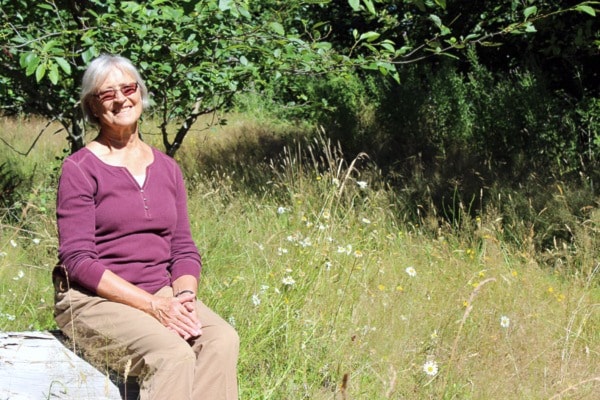The Denman Island Memorial Society (DIMS) is working toward something that would be a first in Canada — an entirely 'green' cemetery.
Although there are other areas in the country with green burial grounds, the idea planned for Denman Island is different, according to Louise Bell, DIMS board member and previous Denman trustee for the Islands Trust.
"The existing green cemeteries in Canada are small extensions on large existing cemeteries," explained Bell. "This one on Denman Island would be the first cemetery that's totally green. We're very proud of it."
The green cemetery or natural burial ground would sit on about one hectare of previously logged land offered by the Denman Conservancy Association (DCA); this land at the corner of Denman and North Central Roads actually sits across the road from Denman Island's current cemetery.
According to Bell, the current cemetery was created in 1904 and is nearing capacity.
"For 25 or more years there has not been a plot for purchase," she explained. "They may not all be filled, but they're all purchased, so in the instances where somebody has been buried more recently it's because somebody has forfeited a plot."
Thus, the island needs a new cemetery, and the idea for a green one really started to take shape in late 2008. By spring 2009 DIMS was formed, and since then plenty of behind-the-scenes paperwork and planning has been done.
The community was consulted on what it thought of having a completely green cemetery, and Bell noted Islanders were warm to the idea.
"We worked with the community to hear what they want, and generally have had favourable responses to a green cemetery, although there are a few little variations we're going to bring in, the most important one probably being that we will have a few family plots," she explained.
Certain areas would be set aside for family plots, but for the most part specific plots would not be chosen. Instead, each area would be filled with a "paint your way out" method to avoid disruption of grave sites.
Also, visitors would just know the general area of where their loved one's remains were laid rather than the specific location.
"That's the philosophy of green burial, that you know that somewhere there in that grove of wildflowers or trees… that somewhere in that area you know your family member is buried," she explained.
The other, more obvious, part of the philosophy of green burial is to return human remains to the earth with little or no impact on the Earth.
"There's no embalming, and any clothing on a body that's being buried must be biodegradable, and then the casket or whatever kind of covering people choose must be biodegradable," explained Bell.
"There's no vault in the grave and there's no tombstone, and there's no landscaping. Once the plantings are done following the burial then it's allowed to regenerate naturally, with the exception maybe of removing any invasive vegetation."
Small, flat markers could be laid on particular grave sites, but people would be encouraged to use the communal memorial, which would be featured in an area called the gathering place and have the names of every person buried there.
The cemetery would feature three sections called Woodland, Meadow and Arbutus, with a separate treed area containing a scattering garden for cremated remains — although Bell noted cremation is not encouraged because it is less environmentally friendly than green burial. A pathway would run through the length of the cemetery, with gates at either end, and benches would be set up in the gathering area and scattering garden.
DIMS, which has eight board members, has some more paperwork to do before the land can officially be transferred over from DCA, and after that happens the land can start to be prepared.
According to Bell, various groups and individuals have put in plenty of free work on the project so far.
Also, while DIMS still has more fundraising to do for the project, the community has contributed, and the group has received a few grants, one larger grant from Real Estate Foundation of BC, and a couple from the Comox Valley Regional District.
For more information on the project contact dims@telus.net.
writer@comoxvalleyrecord.com
